
Photoblog: The ancient babs of modern Marrakech
The striking red ramparts of Marrakech, first built by the Almoravids in the 12th Century, lend their name to the Ochre City of Morocco.
Originally a means of fortification, the city walls today stretch some 19 kilometres, providing access to the ancient medina via their babs, or gates. The number of officially recognised babs is disputed, as new doorways crop up, providing access to busy residential areas. Modern guidebooks and maps will indicate anywhere between 10 and 25 gates, many of which are named after the tribes or produce that historically travelled through each into Marrakech medina.
Today, the city has expanded beyond its ancient walls, and the babs of Marrakech have been absorbed into the modern and diverse city - as entrances to flea markets, tanneries and residential areas, and enveloping luxury hotels, cemeteries and the Royal Palace.
From ancient and decorative thoroughfares into the old medina, to modern archways that envelop highways, today's ramparts have adapted through the ages to accommodate the city's changing landscape. Many of these babs have survived the city's historic and varied conquests, persisting as a key and enduring characteristic of the city until modern times.
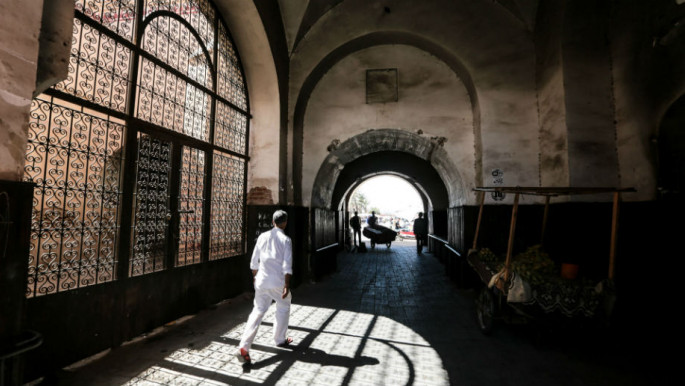 |
| Bab el Khemis - the Thursday Gate - in the north of the medina is named after a traditional weekly Thursday cattle market, that used to trade in 'camels, horses, mules and asses', according to Irishman Arthur Leared who visited Marrakech in 1872. The gate's lesser-known name is Bab Fez, after the 11th Century Sufi, Sheikh Jelani, who is said to have rested at this gate en route to the city of Fez [Ruqaya Izzidien] |
| _ |
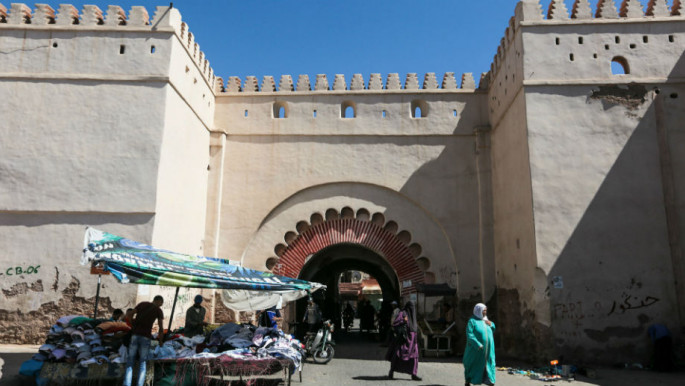 |
| During its heyday, the Bab el Khamis, and its weekly market, outshone today's more famous hub Jamaa el Fna, which also hosted a weekly market. Today, however, Jamaa el Fna is more associated with tourists and snake charmers than its ancient cattle market [Ruqaya Izzidien] |
| _ |
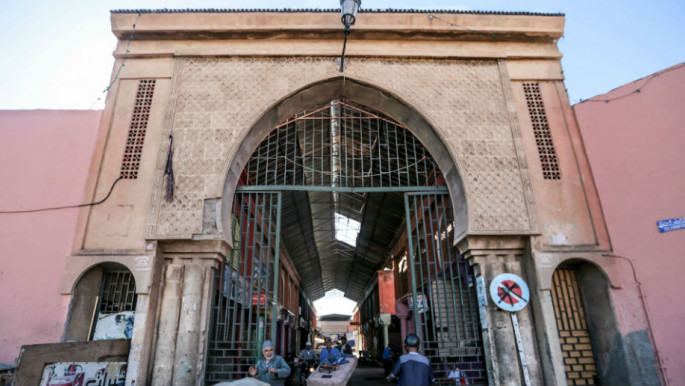 |
| Bouiba el Layadi is commonly mistaken for Bab el Khamis, due to its proximity to the Thursday Market. Located just north of Bab el Khamis, it leads through the medina and hosts an indoor flea market of knick-knacks, furniture and antiques. From decorative traditional studded Moroccan doors, knotted mashrabiyas and French colonial art deco furniture, to vintage mopeds, sewing machines and flimsy plastic dining furniture [Ruqaya Izzidien] |
| _ |
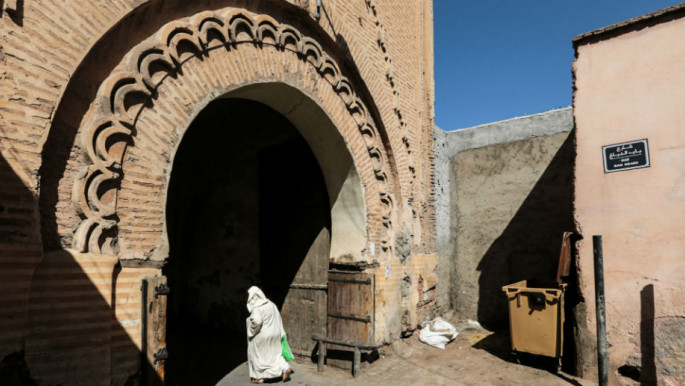 |
| South-east of Bouiba el Layadi is Bab Dabbagh, one of the oldest babs of Marrakech, that winds its way to the tannery quarter of Marrakech. Leather tanners have been practising their skill in this north-eastern part of the city since 1062. For almost one thousand years, the tanning process remains almost unchanged. Most of the treatment and tanning of animal hides is done by hand - or foot - and relies on patience, modern dyes and the sun to complete the transformation. The tanneries' location near a waterway provides irrigation to reduce the stench that accompanies the tanning of animal hides [Ruqaya Izzidien] |
| _ |
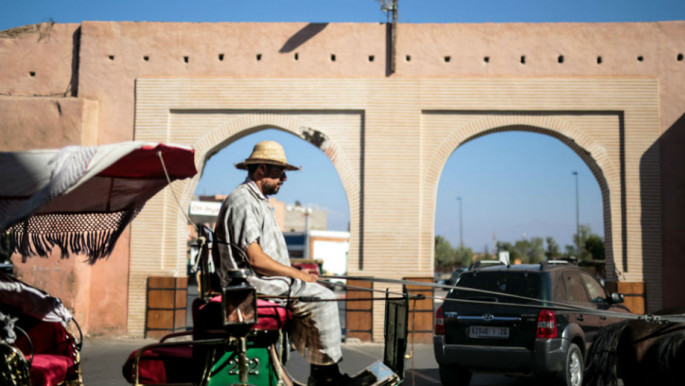 |
|
Although Bab Aghmat is named after the former regional capital of the Idrisid dynasty, today it is a modern and busy intersection that bustles with taxis, mopeds, bicycles and caleche carriages, often all at once. Bab Aghmat is a key gateway into to the south-eastern corner of the city [Ruqaya Izzidien] |
| _ |
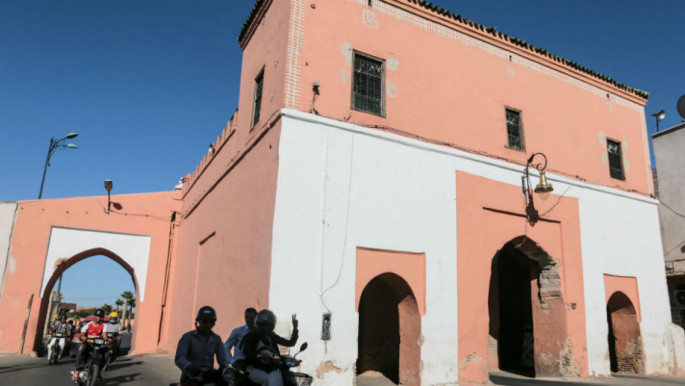 |
|
Bab Hmar - the Red Gate - is one of the most famous and iconic babs in Marrakech. Its distinctive red colour and unique architecture - a house-like building with four archways set across a busy road - have made it an identifiable and unusual gateway into the ancient Jewish quarter, or Mellah [Ruqaya Izzidien] |
| _ |
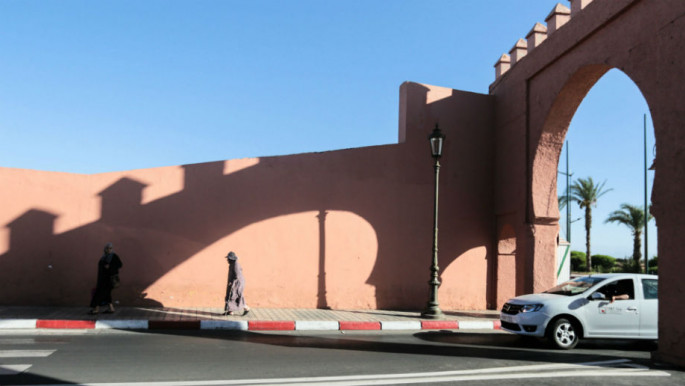 |
|
The ramparts of Marrakech envelop the Royal Palace, with a number of new and old babs surrounding the area, including Bab el Rih (the Wind Gate), Bab el Akhdar (the Green Gate) and Bab Ksiba (the Kasbah Gate). Bab Ighli (pictured) is a newer gate that leads to the Bab Ighli quarter outside of the medina on one side, and leads to the Royal Palace within the medina on the other [Ruqaya Izzidien] |
| _ |
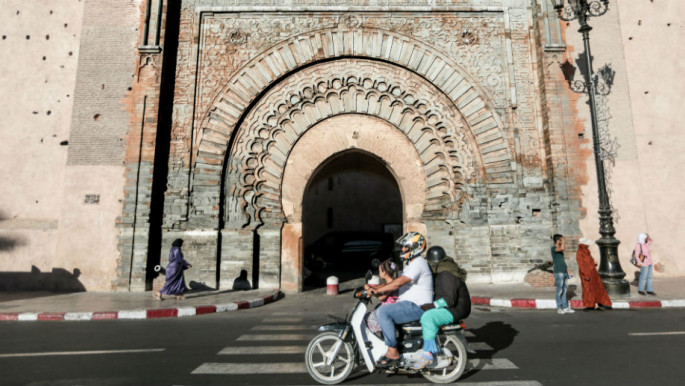 |
|
Built in the 12th Century by the Almohads, Bab Agnaou is the official and ancient entrance of the Marrakech Kasbah. The etymology of Agnaou is Tamazight, but the precise origin is disputed; some claim it is named after the Gnawa people of West Africa, and others translate 'Agnaou' to mean a ram without horns. It is considered the most decorative of all the doors along the Marrakech ramparts [Ruqaya Izzidien] |
| _ |
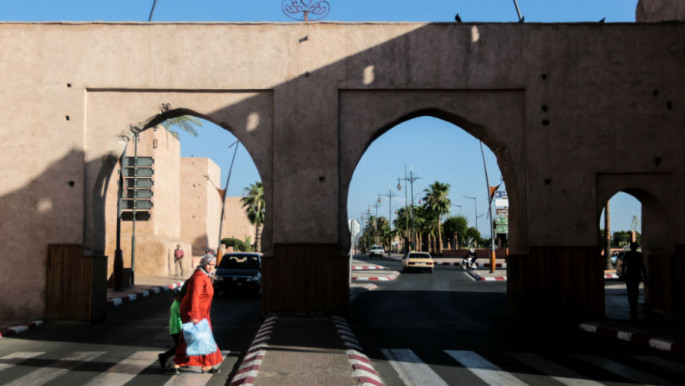 |
|
Bab el Robb was built during the Almohad dynasty as a defensive gate to the city. It is widely perceived to mean God's Gate, but most historians agree that it is more likely to be named after an Almohadian alcoholic fruit drink made with berries and figs that was brought to trade in Marrakech via this gate. It is one of the main entrances into the medina for traffic and travellers from other cities, though not as busy as the larger Bab Jdid, located north of Bab el Robb [Ruqaya Izzidien] |
| _ |
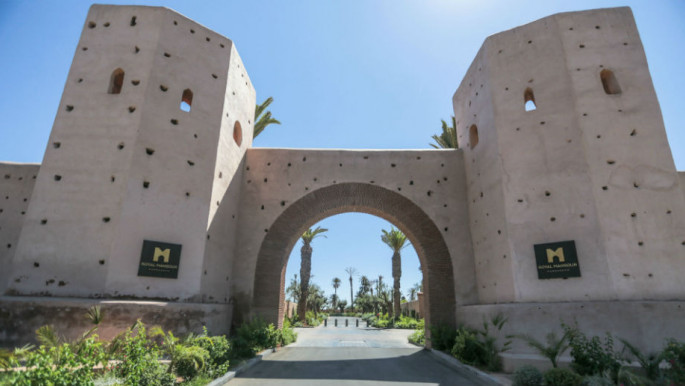 |
|
Throughout the city, babs have adapted to accommodate new buildings and thoroughfares. Bab Makhzen (pictured) and Bab Sidi Ghrib have been absorbed as entrances a new luxury hotel [Ruqaya Izzidien] |
| _ |
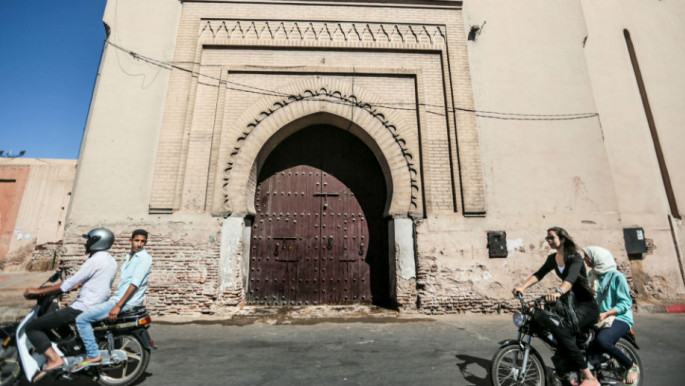 |
|
Bab Doukkala was one of the original gates built by the Almoravids in the 12th century and is one of the main hubs in the north-east of the city. It consists of a large gate and several smaller pedestrian crossings [Ruqaya Izzidien] |
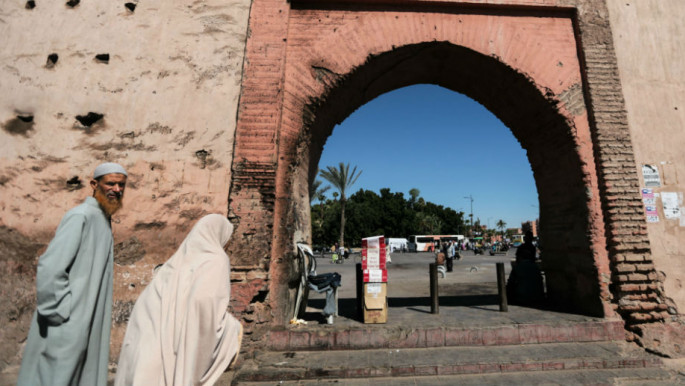 |
|
Bab Doukkala is named after the Amazigh Doukkala tribe whose traders historically entered the city through this gateway [Ruqaya Izzidien] |
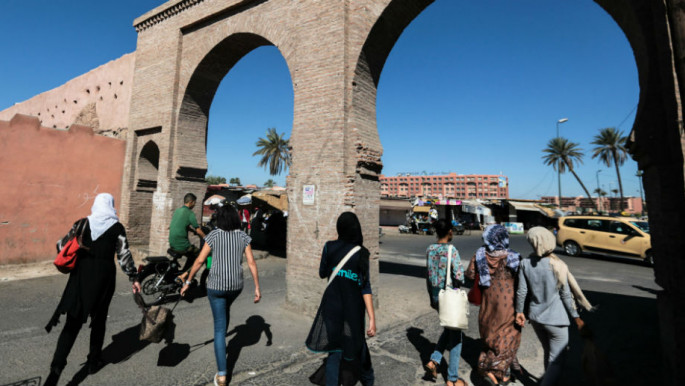 |
|
Bab Yacout connects the north-eastern part of the medina with the local taxi rank and bus station. It is one of several small babs in the north-east of the medina that provide access via narrow winding streets to the busy northern area, which is filled with residential alleyways and upscale Riads [Ruqaya Izzidien] |
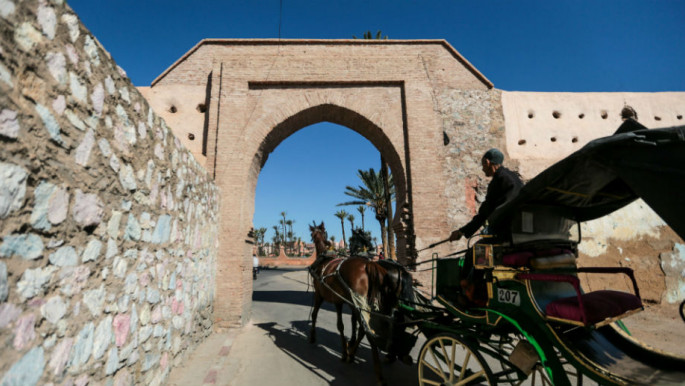 |
|
A number of newer pedestrian gateways have cropped up in this stretch of the ramparts - which tower up to 19 feet high - providing access to homes. Even the older babs in this area often go unmarked or unrecognised on official maps. Bab Jnane Bel Abbes, pictured here, and sometimes known as Bab Kbour Chou, is an often overlooked bab, serving the practical purpose of access to a busy residential area in the north of the medina [Ruqaya Izzidien] |
Ruqaya Izzidien is a freelance British-Iraqi writer specializing in social and cultural affairs. Her work has been published in The New York Times, the Guardian, the BBC and Al Jazeera English, and her upcoming novel is entitled The Watermelon Boys.
Follow her on Twitter: @RuqayaIzzidien







